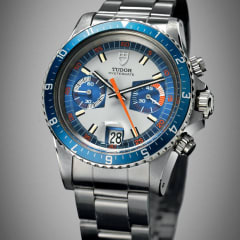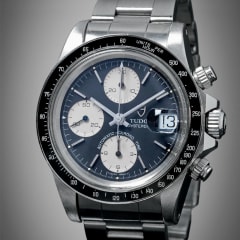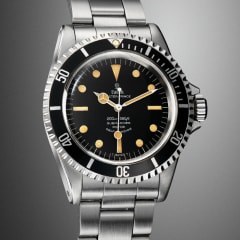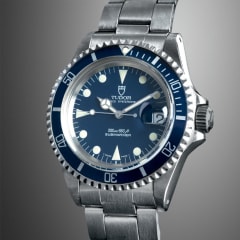A UNIQUE STYLEthe chronographs: 1970
For nearly half a century, TUDOR has left its mark on the history of chronographs with products of strong identity, unique style and uncompromising quality. By proving equal to the task, by kindling passion, by constantly improving its products and by offering models clearly belonging to their era but retaining their own distinct identity, TUDOR has earned a place apart in the field of sports chronographs, embodied in the development of four successive families of products. In 1970, with the launch of its first mechanical manually-wound model, the Oysterdate chronograph, the brand immediately impressed aficionados through its exceptional use of bright colours and its choice of characteristic pentagonal hour markers.
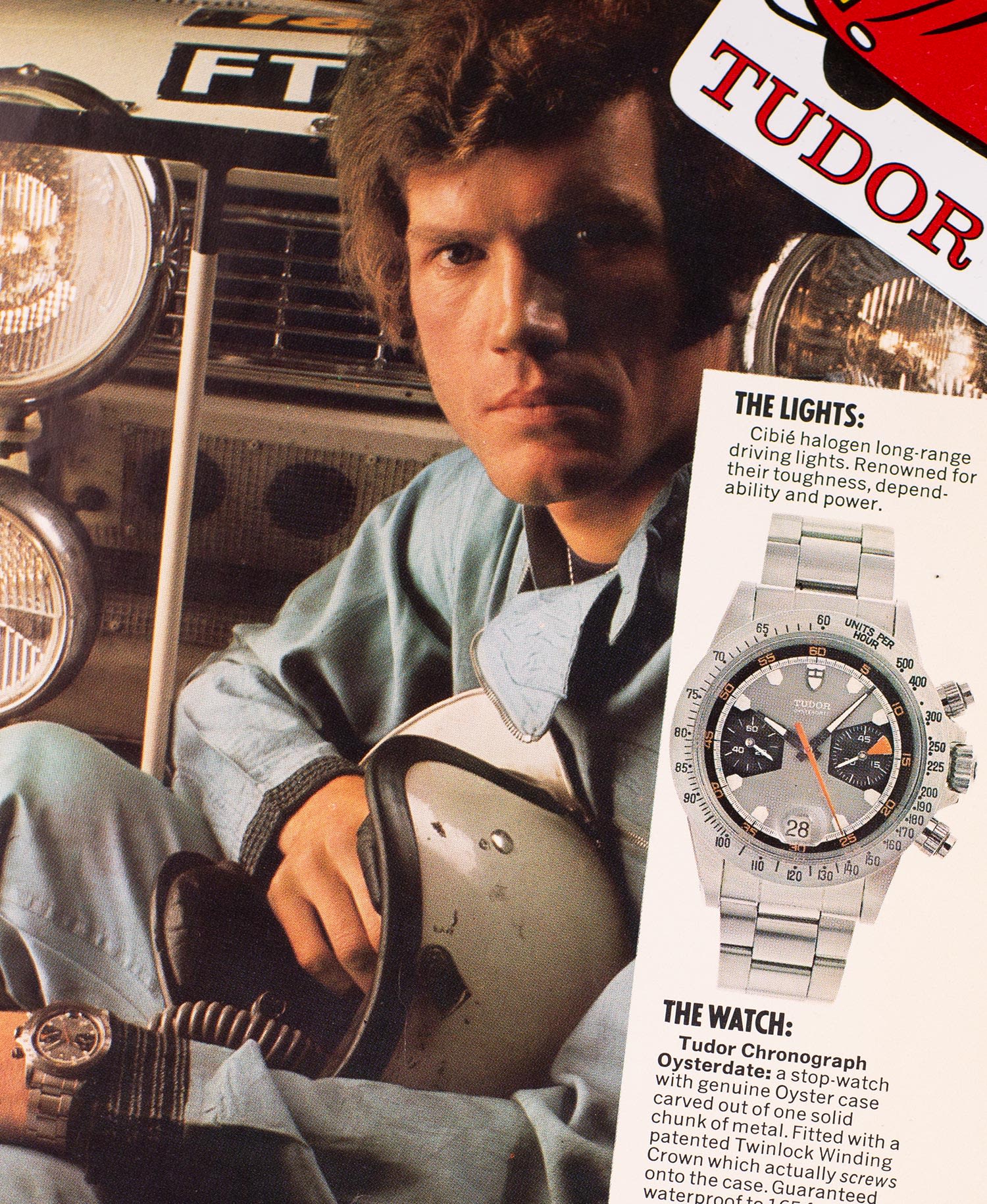
1970 FIRST SERIES: TUDOR OYSTERDATE
The first TUDOR chronograph was named Oysterdate. Featuring a manually-wound Valjoux mechanical Calibre 7734 and a cam mechanism chronograph, it was introduced in 1970. Its case dimensions were significant, with a 39 mm diameter more imposing than many standards of the time, the characteristically pronounced bevelled edge of its lugs, and its muscular well-honed lines. The very graphic style of its dial was also unusual. A daring wager, but a wager that paid off since the model immediately found its audience.
There were three variations of this first sporty TUDOR chronograph, differentiated by their types of bezel. Two were produced in large numbers, while the third was never commercialised. Their look is unique and noble, their roots technical and sporty. Reference 7031/0 is characterised by a bezel topped with a Plexiglas insert featuring a 500-unit graduated tachymetric scale, which can be used to calculate the hourly average speed between two points. Reference 7032/0 has a satin-finished steel bezel, also engraved with a 500-unit graduated tachymetric scale. The last one, reference 7033/0, featured a bidirectional rotatable bezel with a black 12-unit graduated insert in anodised aluminium; it never went beyond the prototype stage.
The dials of these first three references were identical and comprised three colours: grey background, black counters and a minute track on a white background. In addition, they had unconventional luminous pentagon-shaped painted hour markers that earned them the nickname “home plate” in collectors’ circles because they were reminiscent of the shape of the home plate on a baseball field. Finally, a last particularity, the chronograph minute counter consisted of 45 minutes, an unusual variation on the more common 30-minute counter. Thanks to their waterproof Oyster-type cases, and their screw-down winding crowns, these chronographs were waterproof to a depth of 50 metres. Their screw-down pushers prevented any accidental engagement of the chronograph.

1970 TUDOR OYSTERDATE 7031/0
The TUDOR Oysterdate reference 7031/0 is one of the first two chronographs that TUDOR produced and commercialised. Highly valued by collectors in the same way as its sister reference 7032/0, it is different from the latter only in its black Plexiglas bezel with a 500-unit graduated tachymetric scale, which can be used to calculate hourly average speeds between two points. Its 39 mm case is waterproof to a depth of 50 metres and houses the manually-wound mechanical Valjoux 7734 movement with a power reserve of more than 45 hours. The case back is engraved “Original Oyster Case by Rolex Geneva”. Its steel bracelet is a Rolex Oyster-type bracelet, reference 7836, with folding links. Located at 3 and 9 o’clock, the two counters of its famous grey and black dial with distinctive hour markers indicate, respectively, the seconds of the permanent display and the elapsed minutes of the chronograph function.
1970 TUDOR OYSTERDATE 7032/0
Presented the same year as reference 7031/0, the TUDOR Oysterdate chronograph reference 7032/0 has essentially the same characteristics except that it is equipped with a satin-finished steel bezel with a 500-unit graduated engraved tachymetric scale. Like reference 7031/0, its Oyster case in steel with screw-down pushers and signed Rolex winding crown measures 39 mm in diameter and houses its Valjoux 7734 movement. Its bracelet is also a Rolex Oyster-type bracelet with folding links, reference 7836. Its characteristic dial with two counters and the date at 6 o’clock is in every way similar to that of its sister reference.
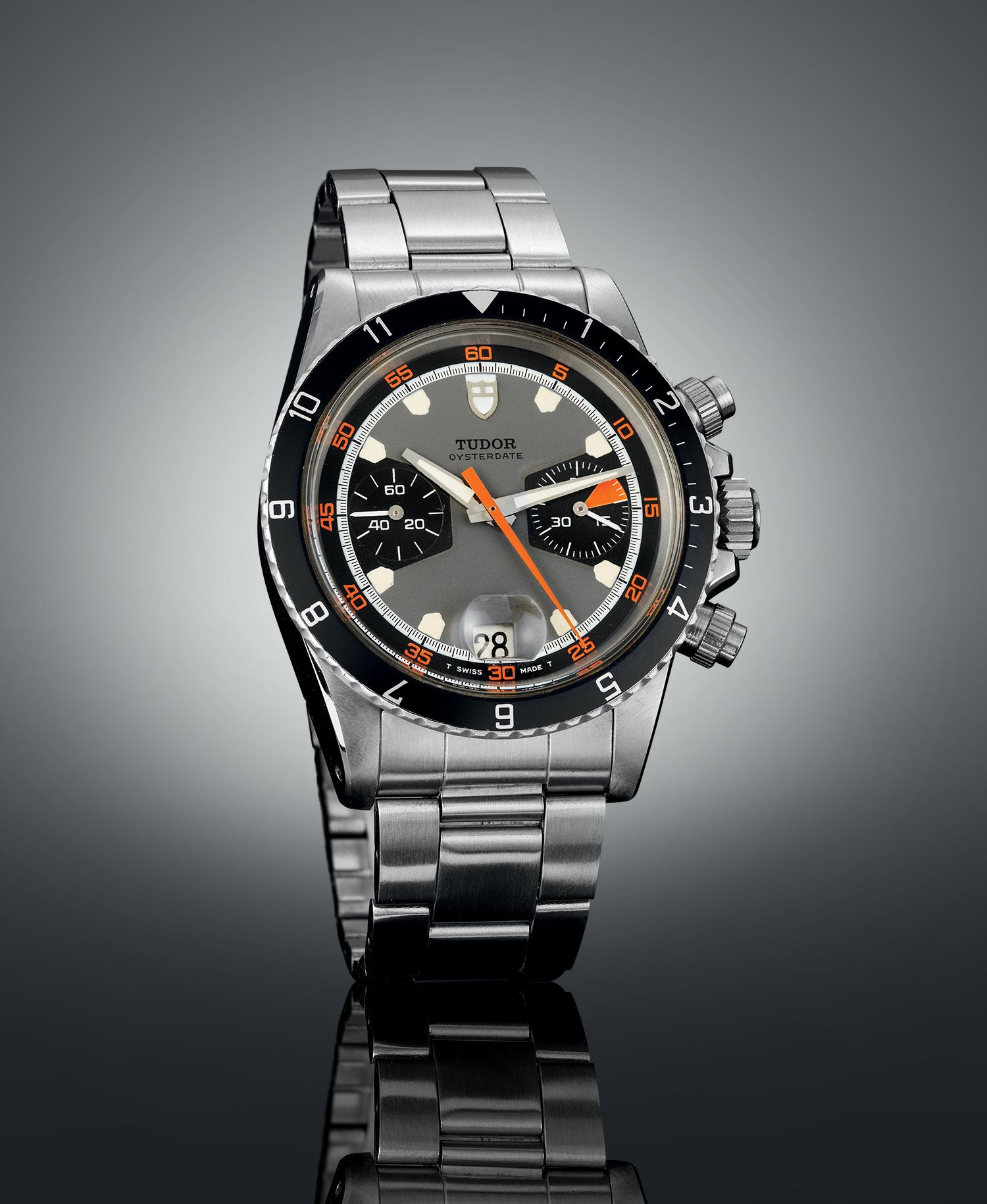
1970 TUDOR OYSTERDATE 7033/0
The last version of the Oysterdate chronograph 7000 series is reference 7033/0. Unlike the two preceding models it was never commercialised. Otherwise resembling the others in every way, it was however endowed with an exceptional bidirectional rotatable bezel with a 12-unit graduated black anodised aluminium insert, which prefigured reference 7169/0, launched in 1971.
